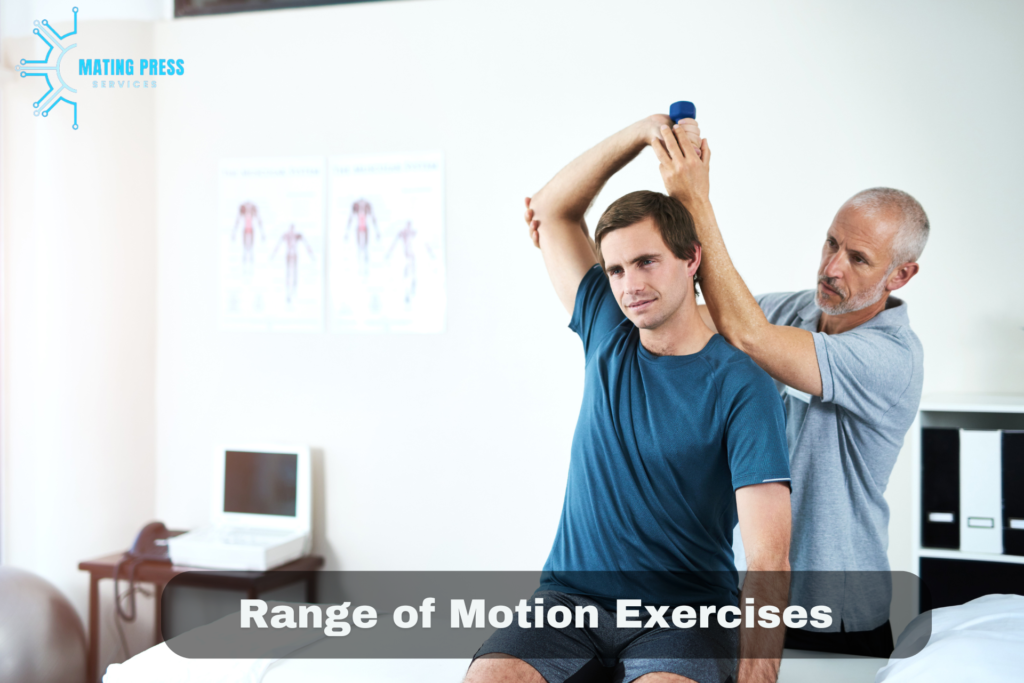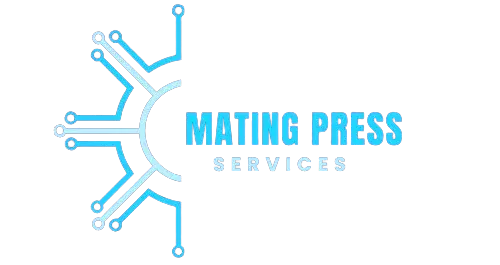What Exercises Can Help Strengthen Your Elbow After Injury?

Tennis elbow is an overuse and strain condition of the forearm muscles that can affect daily activities and athletic performance if not dealt with appropriately. Integrating carefully selected exercises that strengthen this area into your recovery plan is thus highly relevant for restoring functionality and preventing further injury.
Such exercises help rebuild strength, gain flexibility, and eliminate muscle imbalances that are responsible for such conditions. Effective rehabilitation ensures that there is not only pain alleviation but also better overall elbow stability and resilience. A properly structured exercise program following your needs is added to the best recovery methods in the best cases, under professional guidance. The recovery from any elbow injury specifically related to treatment for tennis elbow UK should be done with a multidimensional approach to rehabilitation.
Bicep Curls:
To execute the normal biceps curl, place both feet shoulder-width apart. Take a dumbbell on each hand, with the palms facing out in front of your thighs. Keep your elbows at your sides, and slowly start curling the weights up towards your shoulder; it should be smooth and controlled. Lower weights back down slowly to the original position.
This exercise will engage your biceps and is very important in stabilising your elbow. These will help you strengthen your biceps by doing bicep curls, and this will sort out the definition of your muscles much better while enhancing the stability in the elbow joint. Adding this workout into your routine continually might provide for better elbow function and help in preventing injuries, which again helps to support balanced and effective rehabilitation.
Tricep Extensions:
Stand or sit with your back straight, then hold a dumbbell or resistance band with both hands overhead. Lower the weight or band behind the head, bending your elbows, but only as far as you remain in control. Fully extend your arms to return to the top position and engage your triceps. This exercise strongly engages the triceps, which are important in elbow extension and equally essential in overall arm strength. Tricep extensions will help you to develop upper arm muscle definition, give more stability to the elbows, and foster healthier arm function. In this regard, doing this exercise frequently will help in the rehabilitation process and also prevent other future problems related to the elbows.
Forearm Wrist Curls:
Hold a dumbbell in your hand. Now bend your wrist up towards your body very slow and controlled. Gradually lower the weight back down into the starting position. This exercise works the muscles of the forearm, which develop grip strength and, therefore, increase the stability of the elbow. With regular exercise in Forearm Wrist Curls, one enhances endurance and strength of the forearm muscles to ensure that functioning at the elbow joint is improved and the possibility of injury reduced. This exercise is great for developing basic strength that will sustain independent living skills and most sport-based athletics.
Reverse Wrist Curls:
Do reverse wrist curls the same way as the forearm wrist curls except for overhand gripped dumbbells. Place yourself in a position where you have your forearm on your thigh, your wrist hanging over your knee, and your hand grasping a dumbbell with your palm toward your thigh. Curl your wrist in the upward direction against gravitational force.
The movement should be slow and controlled. Slowly let the weight return back to the starting position once more. This exercise targets the extensor muscles of the forearm, which are important in maintaining good muscle balance around the elbow joint. Additional reverse wrist curls into the workout regimen ensure an even more balanced development of forearm muscles, hence better elbow stability and general strength in his arm. The maturity that one attains gives greater functioning of joints while minimising the cases of overuse injuries.
Elbow Flexor Stretch:
Extend your arm in the anterior direction with your palm facing up. With the other arm, hold onto your fingers in a grip and pull back towards you. Hold this stretch for 20-30 seconds. Then switch and do this with the other arm. This will stretch the muscles of your forearm. This elbow flexor stretch enhances the range into the forearm and, simultaneously abolishes muscle stiffness to contribute to optimal general elbow health. It also aids muscle balance, which will make the elbow more resilient and functional.
Range of Motion Exercises

Before focusing on strengthening, it’s important to restore range of motion (ROM) in the elbow. After an injury, it’s common for the joint to become stiff, so these exercises are designed to gradually increase mobility without causing additional damage.
1. Elbow Flexion and Extension
This exercise focuses on restoring the natural movement of the elbow.
- How to Perform: Sit with your arm resting on a flat surface, such as a table. Slowly bend your elbow, bringing your hand toward your shoulder, and then extend your arm back out straight.
- Repetitions: 10-15 repetitions, 2-3 times daily.
2. Wrist Flexion and Extension
Wrist movements directly impact elbow mobility, as both joints work together during arm motion.
- How to Perform: Hold your injured arm out in front of you. Slowly bend your wrist up and down while keeping your elbow straight.
- Repetitions: 10 repetitions each direction, 2-3 times a day.
3. Forearm Pronation and Supination
Rotating the forearm is key to improving elbow function and mobility.
- How to Perform: While seated, place your arm on a table with your palm facing up. Rotate your forearm, turning your palm face down and then back up.
- Repetitions: 10-12 repetitions, 2-3 times a day.
Strengthening Exercises for Elbow Recovery
Once you’ve regained some mobility, it’s essential to start strengthening exercises to build the muscles that support the elbow joint. These exercises will help stabilize the elbow and prevent reinjury.
4. Isometric Biceps and Triceps Contractions
Isometric exercises are great for strengthening muscles without putting excessive strain on the joint itself.
- How to Perform: For the biceps, press your hand against a wall or immovable object and try to “curl” it without moving your arm. For the triceps, push your hand down against a firm surface as if you are trying to straighten your arm.
- Hold: Hold each contraction for 5-10 seconds, repeating 10-12 times for each muscle group.
5. Bicep Curls with Resistance Bands
Bicep curls target the upper arm muscles, providing support for the elbow.
- How to Perform: Use a resistance band, stepping on one end while holding the other in your hand. Slowly curl your arm upward, keeping your elbow close to your body.
- Repetitions: 10-15 repetitions, 2-3 sets.
6. Tricep Extensions with Light Weights
The triceps are essential for elbow extension and stability.
- How to Perform: Hold a light dumbbell or resistance band. Extend your arm behind you, keeping your elbow tucked in close to your head, and then slowly return to the starting position.
- Repetitions: 10-15 repetitions, 2-3 sets.
7. Wrist Curls
Strengthening the muscles in the forearm reduces strain on the elbow during everyday activities.
- How to Perform: Hold a light weight in your hand and rest your forearm on a table, palm facing upward. Curl your wrist toward you, then slowly lower the weight back down.
- Repetitions: 10-15 repetitions, 2-3 sets for each arm.
8. Reverse Wrist Curls
This exercise targets the extensor muscles of the forearm, balancing out strength around the elbow joint.
- How to Perform: With your forearm resting on a table and your palm facing downward, hold a light weight. Slowly curl your wrist upward, then return it to the starting position.
- Repetitions: 10-15 repetitions, 2-3 sets.
9. Hammer Curls
Hammer curls are effective for engaging both the biceps and the brachioradialis muscle, which supports elbow movement.
- How to Perform: Hold a dumbbell with your thumb facing upward (neutral grip). Curl the weight upward as if you are using a hammer, then slowly lower it back down.
- Repetitions: 10-15 repetitions, 2-3 sets.
Stretching Exercises for Long-Term Mobility

Stretching is a crucial part of any elbow rehabilitation program. It helps maintain flexibility, reduces muscle tightness, and improves overall joint function.
10. Tricep Stretch
This stretch helps relieve tension in the back of the arm and improves elbow flexibility.
- How to Perform: Reach your injured arm overhead and bend your elbow so that your hand touches the back of your neck. Use your other hand to gently push the elbow down for a deeper stretch.
- Hold: Hold the stretch for 20-30 seconds, repeating 2-3 times.
11. Wrist Flexor Stretch
This stretch targets the muscles of the forearm, which can become tight after an elbow injury.
- How to Perform: Extend your injured arm in front of you, with your palm facing upward. Use your other hand to gently pull your fingers back toward you, stretching the wrist and forearm.
- Hold: Hold for 20-30 seconds, repeating 2-3 times.
12. Wrist Extensor Stretch
To balance the stretch, it’s important to focus on the extensor muscles as well.
- How to Perform: Extend your arm in front of you, palm facing downward. Gently pull your hand back toward your body using your other hand until you feel a stretch in the top of your forearm.
- Hold: Hold for 20-30 seconds, repeating 2-3 times.
Incorporating Rest and Recovery
While exercises are crucial for strengthening the elbow, it’s equally important to allow adequate rest between sessions. Overworking the injured area can lead to setbacks, so balance exercise with recovery. Ice the elbow after each workout, and use compression wraps if necessary to reduce swelling. If the pain persists, consult with a healthcare professional to ensure that you’re on the right track.
Supplementary Tips for Successful Elbow Rehabilitation
In addition to the exercises and stretching routines detailed earlier, it’s important to address some supplementary practices that can accelerate recovery and improve the effectiveness of your rehabilitation program. Ensuring proper technique, rest, and overall joint care will significantly improve your long-term outcome.
1. Focus on Proper Technique
When performing strengthening or mobility exercises, it is crucial to maintain correct form. Improper technique can place unnecessary strain on the elbow, potentially leading to a setback. For example, during bicep curls or tricep extensions, make sure to avoid using momentum or compensating with your shoulder to lift weights. Keep your movements slow and controlled, focusing on engaging the muscles around the elbow.
If possible, consider working with a physical therapist or personal trainer during the early stages of your rehabilitation. They can guide you through the exercises, correct your form, and provide valuable feedback.
2. Incorporate Warm-Ups and Cool-Downs
Before jumping into your elbow-strengthening routine, it’s vital to warm up the muscles and joints to prepare them for exercise. A simple warm-up involving light cardio, such as brisk walking or cycling for 5-10 minutes, helps increase blood flow to the area, improving flexibility and reducing the risk of injury.
Similarly, after completing your workout, spend time cooling down with gentle stretches. Cooling down can prevent muscle stiffness and improve circulation, aiding in recovery.
3. Stay Hydrated and Nourished
Proper hydration is essential for joint health, as it helps maintain the lubrication of the elbow joint, reducing friction and supporting smooth motion. Drinking adequate amounts of water throughout the day, especially before and after workouts, will aid in muscle recovery and reduce stiffness.
Nutrition also plays a key role in injury recovery. Consuming a balanced diet rich in proteins, healthy fats, and anti-inflammatory foods such as leafy greens, nuts, and omega-3-rich fish can help speed up tissue repair. Incorporating collagen-rich foods or supplements may also support tendon and ligament strength, which are vital for joint stability.
4. Gradually Increase Resistance
As you begin to regain strength in your elbow, it can be tempting to rush the process by increasing weights or resistance too quickly. However, doing so could jeopardize your recovery and increase the risk of reinjury. Instead, adopt a gradual progression approach. Start with light weights or resistance bands and slowly increase resistance as your strength improves. Always prioritize form and control over heavy loads.
5. Rest and Listen to Your Body
The importance of rest in the rehabilitation process cannot be overstated. While it may seem counterintuitive, resting your elbow between workout sessions allows time for muscle tissue to heal and rebuild. Overtraining can lead to inflammation and delayed recovery. Ideally, you should allow 48 hours of rest between strength-training sessions focused on the elbow.
Pay attention to any pain signals your body sends. Mild discomfort is expected during rehabilitation, but sharp or persistent pain is a sign that you need to scale back your exercises or consult a healthcare professional to assess whether you are overloading the joint.
Post-Exercise Care and Prevention of Re-Injury
While performing strengthening exercises is crucial, taking care of your elbow post-exercise is equally important. Overworking the muscles can lead to strain, so it’s essential to allow adequate recovery time. Here are some tips for post-exercise care and preventing re-injury:
1. Apply Ice After Workouts
Icing your elbow after each workout helps reduce inflammation and swelling. Use an ice pack for 15-20 minutes after completing your exercises to soothe any discomfort.
2. Compression and Elevation
If your elbow feels swollen or irritated after exercising, consider using a compression wrap to reduce swelling. Elevating the arm above heart level can also help minimize any post-exercise discomfort.
3. Gradual Progression
Avoid jumping back into strenuous activities too soon. Instead, follow a gradual progression plan that starts with light exercises and slowly increases in intensity. This helps to rebuild strength without overwhelming the healing joint.
4. Pay Attention to Pain
It’s normal to feel slight discomfort when rebuilding strength, but sharp pain or worsening symptoms should not be ignored. If you experience significant pain during or after exercises, consult with your healthcare provider to make sure your rehab program is on the right track.
Long-Term Maintenance
Once you’ve regained full strength and mobility, it’s important to continue incorporating elbow-specific exercises into your routine. Maintaining strength in the elbow and surrounding muscles can help prevent future injuries, especially if you engage in activities that require repetitive arm motions.
- Weekly Stretching: Make sure to stretch your arms, forearms, and wrists regularly to maintain flexibility.
- Functional Training: Incorporate exercises that mimic everyday movements or sports-specific actions to ensure your elbow is prepared for all types of motion.
- Cross-Training: Include cross-training activities, such as swimming or yoga, which can improve overall arm strength and reduce the risk of overuse injuries.
FAQ’s About Injury
How long until I can begin rehabilitation exercises as soon as an elbow injury happens?
It is important to talk to a healthcare provider about the right time to start “rehabilitation exercises”. In general, gentle movements can be started within some days after the injury, but more intensive activities may take days or weeks.
What sorts of injuries at the elbow are suitable for these exercises?
Different types of elbow injuries such as tendinitis, sprains and postoperative rehab can benefit from these exercises. It is therefore necessary to have a professional advice because you will want to adapt it appropriately to your kind of injury.
How many times should I do this exercise?
For best results, you should aim for 3-4 sessions per week with rest days in between them allowing enough time for muscles recovery.
Can I do these exercises if I still feel pain?
Listening to your body is essential. With that said there might be mild discomfort during rehabilitation but if there are sharp pains then one has gone too far. Always seek medical attention in case of extreme suffering before continuing.
When will I start having stronger elbows?
Improvements may differ from person-to-person, though many people typically realize enhanced strength and mobility within weeks of following the rehab program consistently. Be patient and remain committed.
Conclusion: Injury
All of these exercises become quite important in the strengthening and stabilising Injury of the elbow during recovery from any form of injury. This would involve such activities as bicep curls, triceps extensions, forearm wrist curls, reverse wrist curls, and elbow flexor stretches—all targeting different muscles around the elbow to attain strength and flexibility.
While the bicep curls and tricep extensions are total exercises for the arms that will benefit joint stability, with related gains in overall strength, the forearm wrist curls and reverse wrist curls present an opportunity to create overall muscle balance in the hand, focusing on improved grip. Elbow flexor stretch will help minimise muscular tightness and improve flexibility. It is advisable to perform this with a structured exercise routine and consult with your doctor to individualise the program for your needs and condition.






